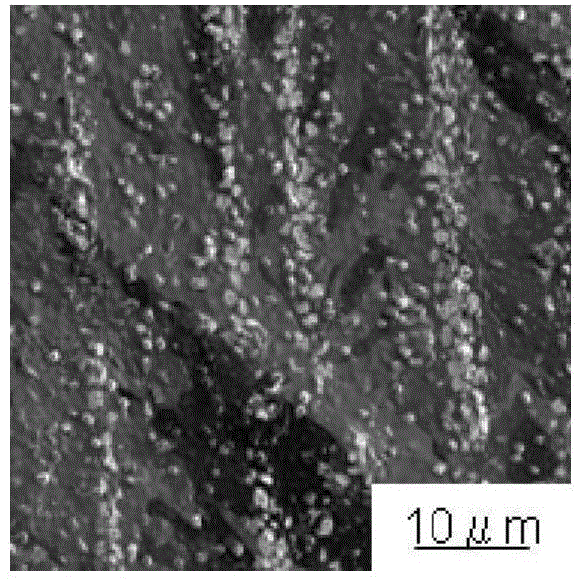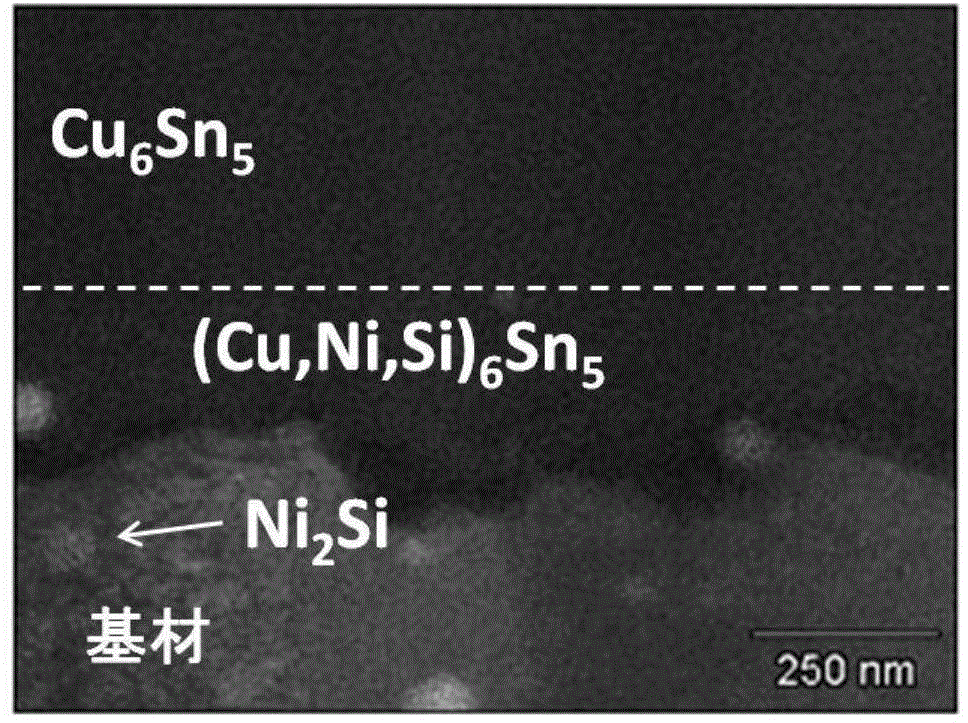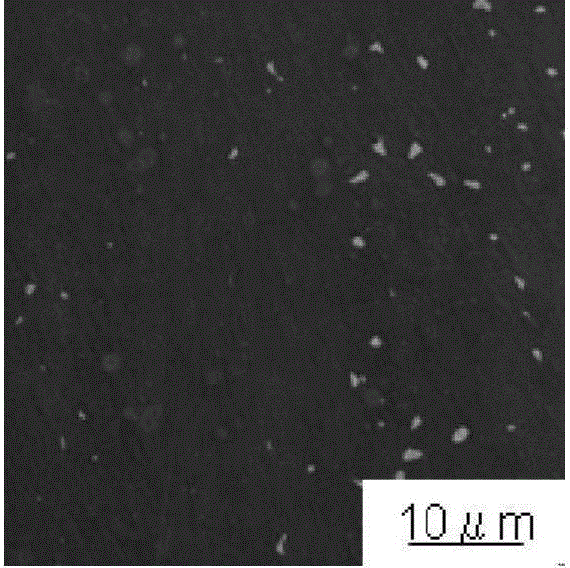Tin-plated copper-alloy material for terminal having excellent insertion/extraction performance
A tinned copper and alloy technology, applied in conductive materials, conductive materials, conductors, etc., can solve the problems of decreased solder wettability, inability to reduce the coefficient of kinetic friction, and increased contact resistance, achieving low contact resistance, good solder wetting. Wet, stable contact resistance effect
- Summary
- Abstract
- Description
- Claims
- Application Information
AI Technical Summary
Problems solved by technology
Method used
Image
Examples
Embodiment
[0045] Copper alloy with a plate thickness of 0.25 mm (0.5 mass % to 5.0 mass % Ni-1.0 mass % Zn-0 mass % to 0.5 mass % Sn-0.1 mass % to 1.5 mass % Si-0 mass % or more and 0.03 mass % or less Fe-0.005 mass % Mg) is used as a base material, after grinding|polishing and roughening the surface, Cu plating and Sn plating are sequentially performed. At this time, the plating conditions for Cu plating and Sn plating are as shown in Table 1. In Table 1, Dk is the abbreviation of cathode current density, ASD is A / dm 2 abbreviation of.
[0046] [Table 1]
[0047]
[0048] After performing the electroplating treatment with the thickness shown in Table 2, both the examples and the comparative examples were subjected to reflow treatment, that is, after a predetermined period of time was maintained under the condition that the surface temperature of the substrate was the specified temperature shown in Table 2 in a reducing atmosphere, a reflow treatment was carried out. water cooled....
PUM
| Property | Measurement | Unit |
|---|---|---|
| surface roughness | aaaaa | aaaaa |
| surface roughness | aaaaa | aaaaa |
| thickness | aaaaa | aaaaa |
Abstract
Description
Claims
Application Information
 Login to View More
Login to View More - R&D
- Intellectual Property
- Life Sciences
- Materials
- Tech Scout
- Unparalleled Data Quality
- Higher Quality Content
- 60% Fewer Hallucinations
Browse by: Latest US Patents, China's latest patents, Technical Efficacy Thesaurus, Application Domain, Technology Topic, Popular Technical Reports.
© 2025 PatSnap. All rights reserved.Legal|Privacy policy|Modern Slavery Act Transparency Statement|Sitemap|About US| Contact US: help@patsnap.com



